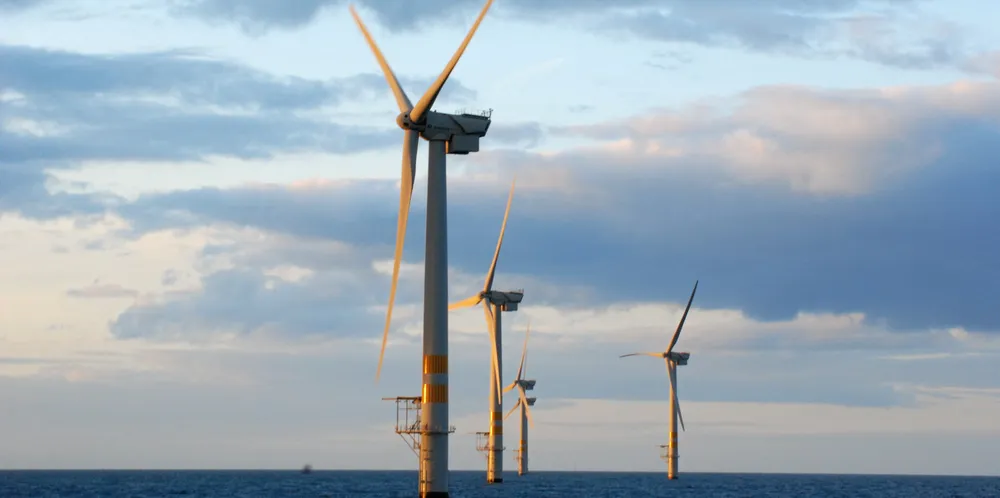Data centers powering extra 'route to market' for soon-to-boom Irish offshore wind
First gigawatt of digital hub capacity around Dublin forecast to harbinger huge demand from yet-to-be-built wind power plant at sea, as country installs its first 5GW by 2030, says analyst Aegir Insights

A massive expansion in the cluster of data centers currently operating around Ireland’s capital city of Dublin is set to give a major boost to the country’s long-brewing ambition to develop tens of gigawatts of offshore wind farms in its waters, according to latest numbers from Aegir Insights.
<b>Focus your mind: get the insight you need with the Recharge Agenda</b>
The global energy transition is gathering momentum – and the accompanying news-stream becoming an information deluge. Separate the green giants from the greenwash and the hard facts from the click-bait headlines with Recharge Agenda, our curation of the market-making events of the week, distilled down into one quick-read newsletter. Sign up here for free
There are already 70 such digital hubs in Ireland being run by Amazon, Microsoft, Apple, Google and Facebook, which together account for 11% of grid capacity, according to transmission system operator Eirgrid. But this percentage is expected to explode to around 70% by 2030, with wind plant at sea in the frame as the primary power source, said the analyst group in a regional market report.
“Many large data center owners already have ambitious renewable energy policies in place, namely [many of the largest] tech giants, and other data center operators are also looking to green their profile,” said Aegir, noting there are eight new data hubs around Dublin now under construction, that will take demand well past the 1GW mark for the first time.
“PPAs [power purchase agreements] with data centers may be a significant opportunity for offshore wind due to sites off the east coast being close to many data centers around Dublin.”
“Eirgrid shows that by 2028, existing data centers could account for 28% of grid capacity and if all proposed data centers are built, this number could rise to 70% in 2030.”
Aegir underlines that beyond data center power demand, Ireland has a “general need” for more renewable energy production, in order to make good on its EU energy transition commitments – which the country has had trouble meeting in recent years. Renewables currently make up 40% of all electricity, but in 2020 still only represented 12.9% of the overall energy mix in the country, while 60% of total plant capacity is still gas.
“Electricity consumption has been growing in the recent years, in tandem with overall energy demand,” said the analyst, adding that further growth is expected, with demand foreseen rising by another 15% by 2024, by electrification and digitalisation.
Ireland’s wind resource is recognised as one of the richest on the planet, with average gusts offshore of better than 10 metres per second (m/s) off its shores. Though the country onshore turbine base doubled between 2013-2020 to over 4GW, it is offshore fleet is expected to to boom from the single array it has, the 25MW Arklow Banks, to as much as 50GW by 2030.
“After a long period of relative inactivity, Irish authorities are now decisively turning to offshore wind to speed up the energy transition, and projects are lining up,” said Aegir in its report.
“If the Irish government gets the MAP [Maritime Area Planning] bill passed by the end of this year and launches the first offshore wind specific auction towards the end of 2022, we see that Ireland could achieve its goal of 5GW offshore wind energy by 2030, as the offshore wind industry in Ireland could take off with a boom due to the many announced projects, whereof some have a head start in terms of consenting.”
All proceeding to the government’s plan, first offshore wind farms off Ireland could be entering into PPAs with data center owners for a 2030 switch-on. And, as the analyst notes, other “corporate offtakers” may also be “relevant” to future offshore wind demand scenarios, as potentially harbingered by pharmaceutical giant Johnson & Johnson’s recent PPA with developer Orsted to transition operations to 100% renewable electricity.
“Average windspeeds around most of the island beckon with great capacity for producing both electricity and green fuels such as green hydrogen,” said Aegir, which calculates an expected levellised cost of energy of €49/MWh ($57/MWh) by 2026 for conventional offshore wind projects, with floating falling between €63/MWh to €52/MWh as the fleet builds out past a first gigawatt by 2030.
“The past couple of years, Irish authorities have shown their commitment to developing the country’s offshore wind resources by working to establish a permitting regime tailored to offshore wind and setting up the framework for offshore wind auctions. The overhaul of the permitting system is currently before the government, and three offshore wind auctions are planned in the coming years, starting in 2022/2023,” said Aegir.
“The offtake landscape looks attractive, as not only utilities but also corporate buyers, nor least Ireland’s large cluster of electricity-hungry data centers, need green electricity. As several announced projects have been granted a special fast-track status by the Irish authorities, build-out could start off with a boom when the first auction is held.”
Ireland’s flagship offshore wind farm, the 1.5GW Codling, being developed by EDF and Fred Olsen Renewables in the Irish Sea, is expected to make a “significant” lead-off contribution to the country meeting its end-of-decade energy transition ambitions, powering some 1.2 million homes.
(Copyright)